Abstract
Chemical and micromorphological analysis revealed that South Chilean “palo podrido” results from a white-rot fungus that causes highly selective and extensive delignification. Palo podrido samples from 10 different hardwood trunks (Eucryphia cordifolia, Drimys winteri, and Nothofagus dombeyi) decayed by Ganoderma applanatum were analyzed. Of 14 samples, 11 had extremely low Klason lignin values, ranging from 6.1 to 0.4% (dry weight). The most remarkable and unusual feature was that delignification and defibration were not restricted to small pockets but extended throughout large areas in the interior of trunks subjected to undisturbed rotting over long periods of time. Comparative analysis of water content, swelling capacity, and lignin content led to the conclusion that besides lignin degradation, suppression of the cellulolytic activity of the rotting organisms plays a decisive role. Among various nutrients added to a palo podrido sample (3% residual Klason lignin), the nitrogen source was the only one leading to almost complete cellulose degradation. We suggest that the extremely low nitrogen content (0.037 to 0.073% [dry weight]) of the investigated wood species was the primary cause for the extensive delignification as well as the concomitant suppression of cellulose breakdown. The low temperatures, high humidity, and microaerobic conditions maintained within the decaying trunks are discussed as additional ecological factors favoring delignification in South Chilean rain forests.
Full text
PDF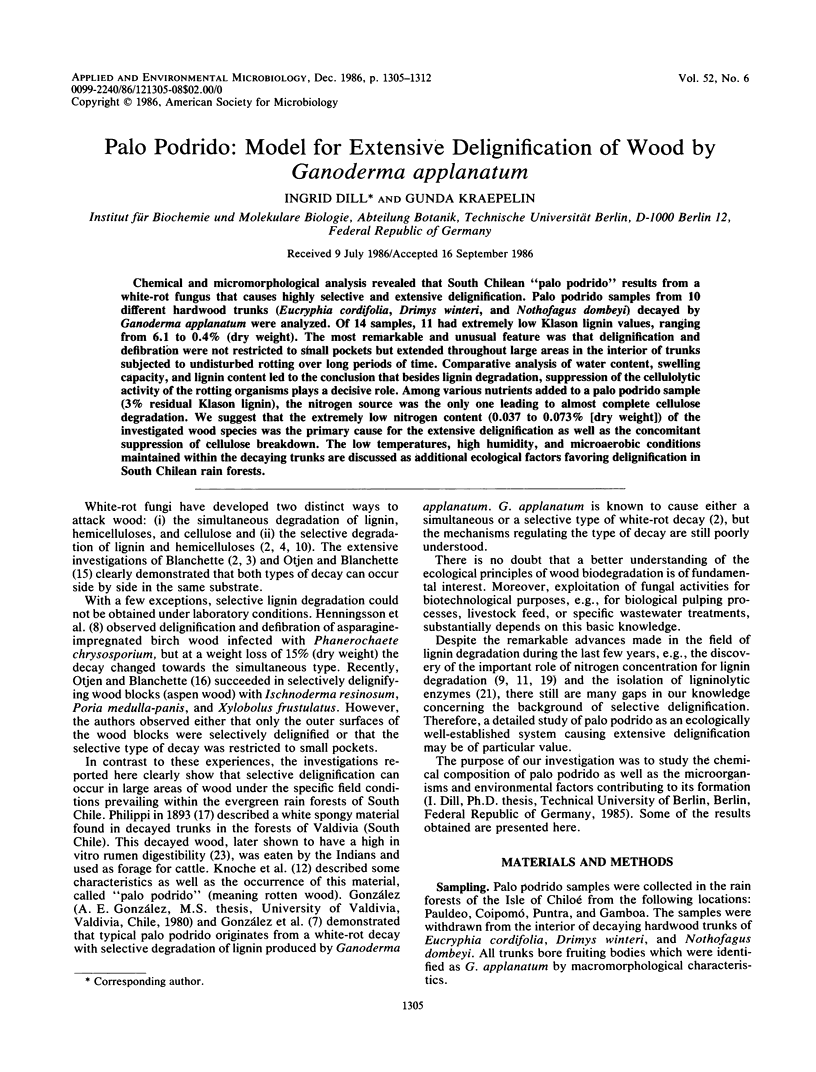

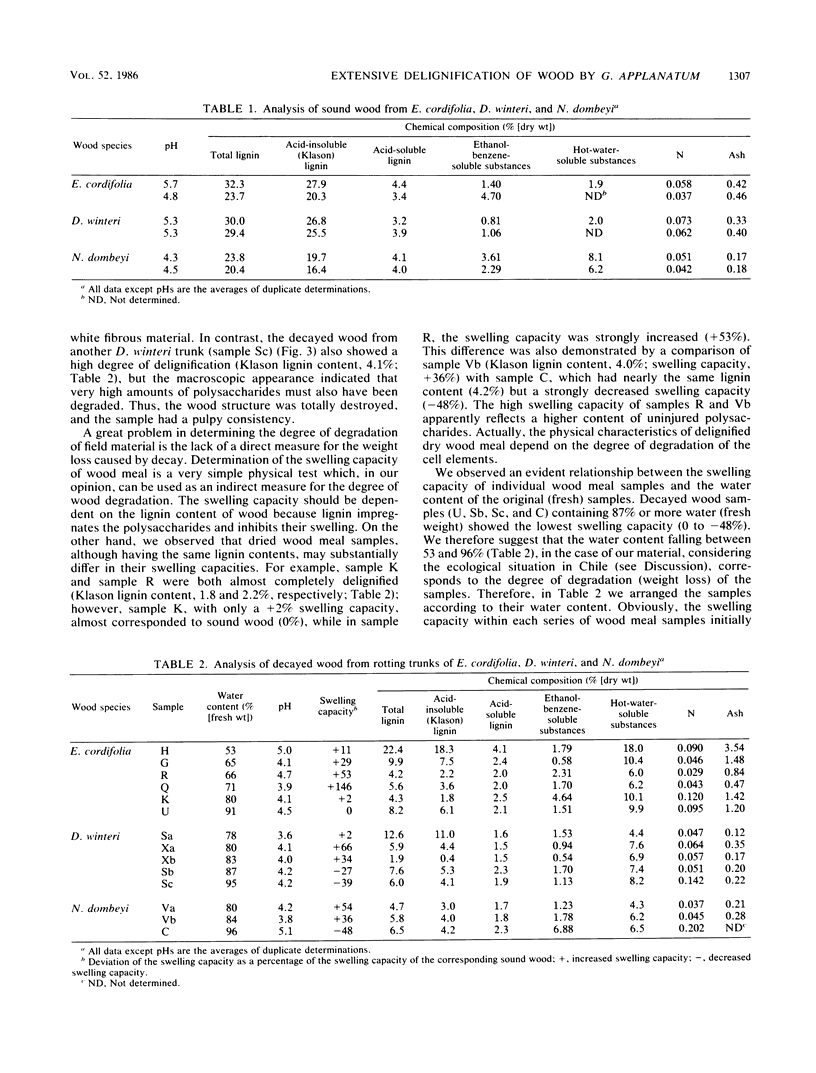
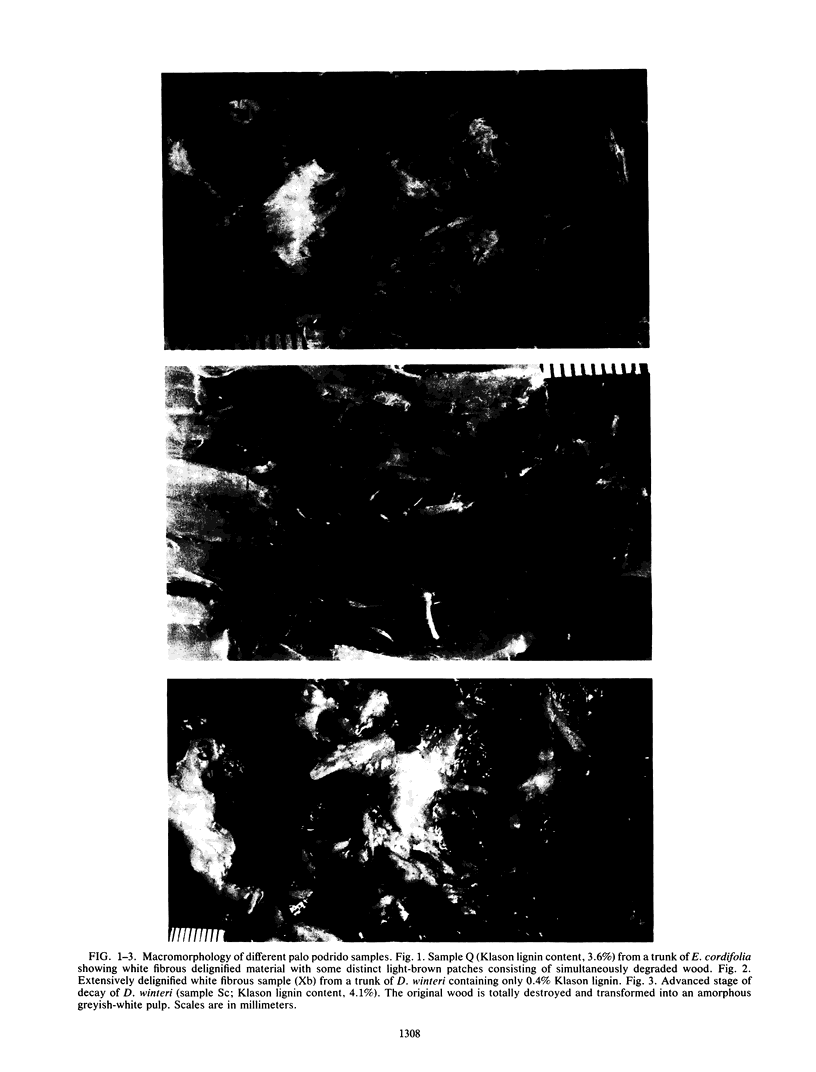
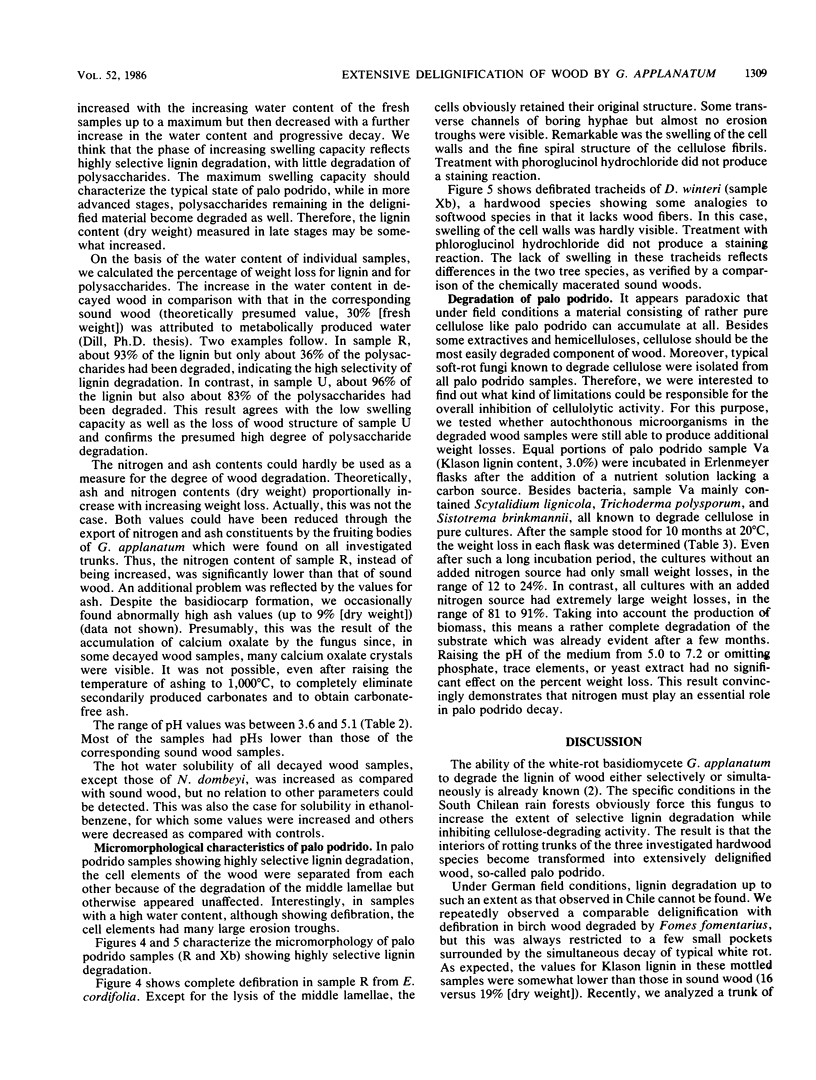
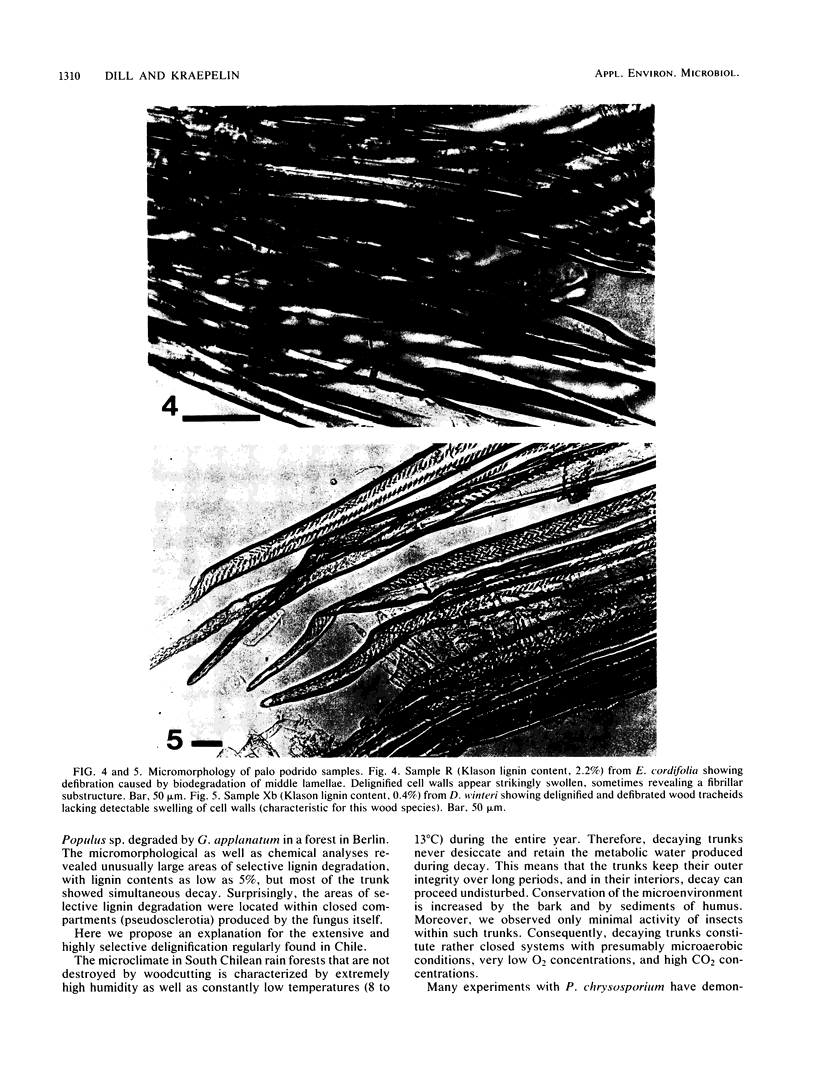
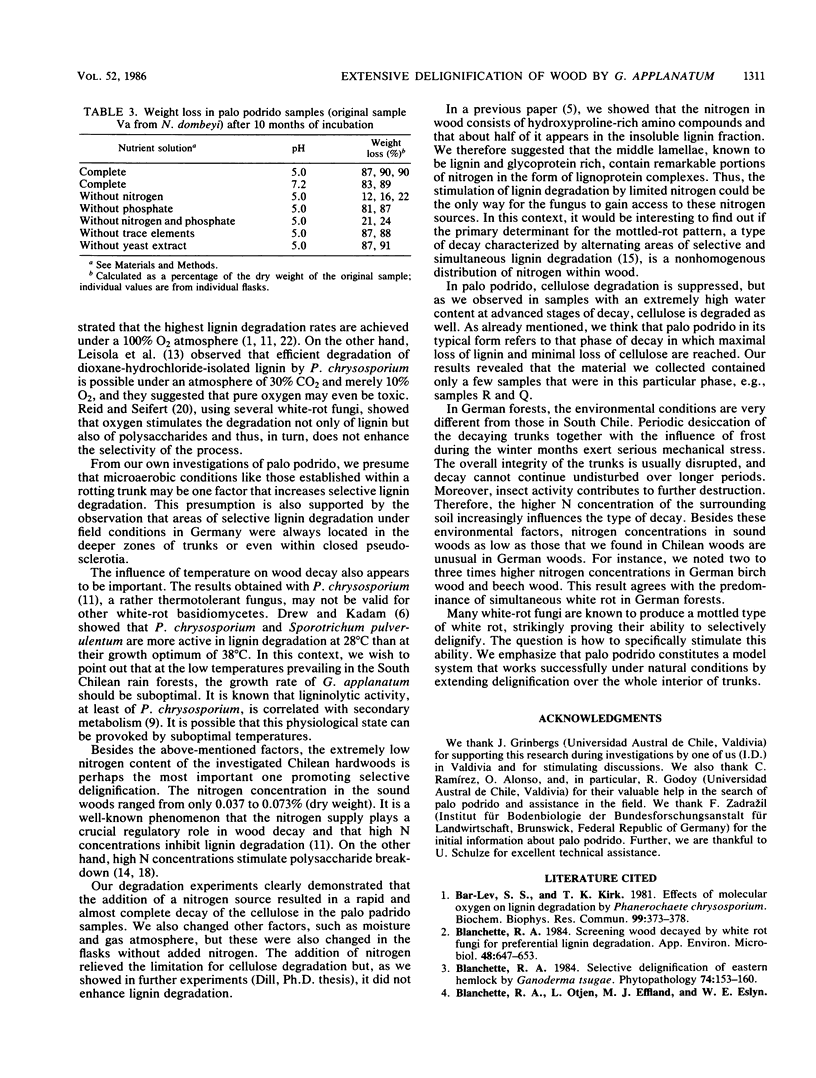
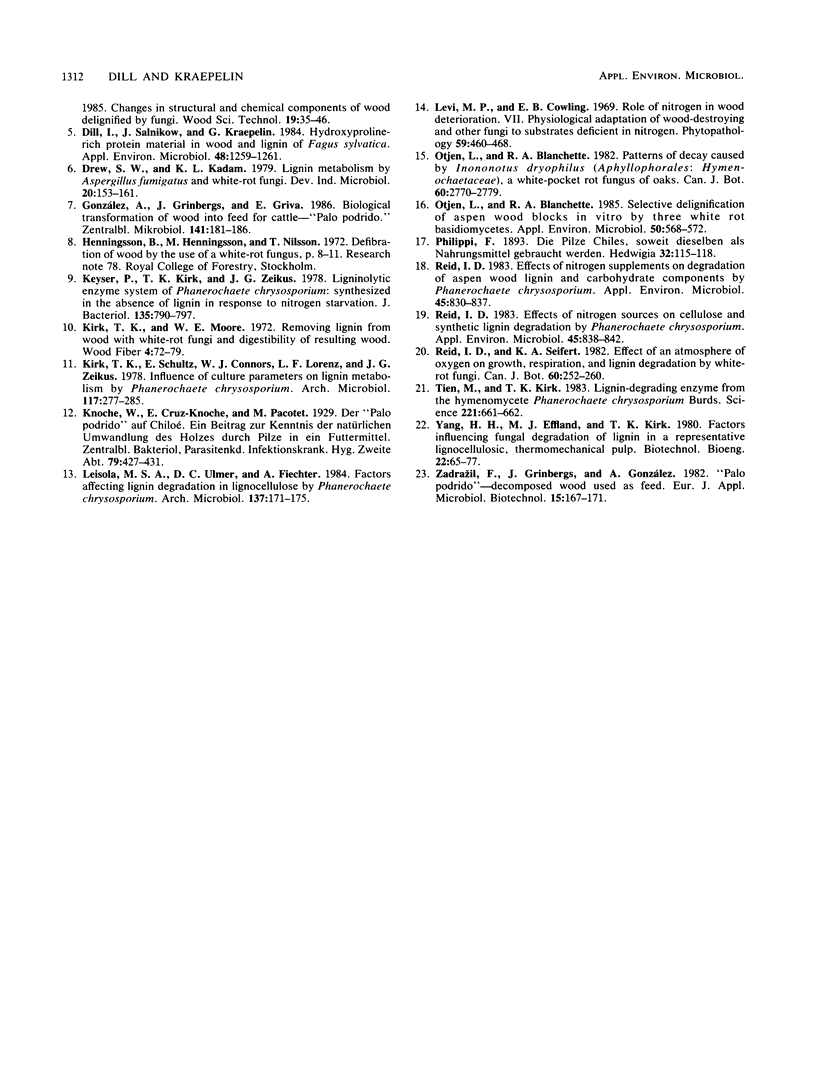
Images in this article
Selected References
These references are in PubMed. This may not be the complete list of references from this article.
- Bar-Lev S. S., Kirk T. K. Effects of molecular oxygen on lignin degradation by Phanerochaete chrysosporium. Biochem Biophys Res Commun. 1981 Mar 31;99(2):373–378. doi: 10.1016/0006-291x(81)91755-1. [DOI] [PubMed] [Google Scholar]
- Blanchette R. A. Screening wood decayed by white rot fungi for preferential lignin degradation. Appl Environ Microbiol. 1984 Sep;48(3):647–653. doi: 10.1128/aem.48.3.647-653.1984. [DOI] [PMC free article] [PubMed] [Google Scholar]
- Dill I., Salnikow J., Kraepelin G. Hydroxyproline-Rich Protein Material in Wood and Lignin of Fagus sylvatica. Appl Environ Microbiol. 1984 Dec;48(6):1259–1261. doi: 10.1128/aem.48.6.1259-1261.1984. [DOI] [PMC free article] [PubMed] [Google Scholar]
- Keyser P., Kirk T. K., Zeikus J. G. Ligninolytic enzyme system of Phanaerochaete chrysosporium: synthesized in the absence of lignin in response to nitrogen starvation. J Bacteriol. 1978 Sep;135(3):790–797. doi: 10.1128/jb.135.3.790-797.1978. [DOI] [PMC free article] [PubMed] [Google Scholar]
- Otjen L., Blanchette R. A. Selective delignification of aspen wood blocks in vitro by three white rot basidiomycetes. Appl Environ Microbiol. 1985 Sep;50(3):568–572. doi: 10.1128/aem.50.3.568-572.1985. [DOI] [PMC free article] [PubMed] [Google Scholar]
- Reid I. D. Effects of Nitrogen Sources on Cellulose and Synthetic Lignin Degradation by Phanerochaete chrysosporium. Appl Environ Microbiol. 1983 Mar;45(3):838–842. doi: 10.1128/aem.45.3.838-842.1983. [DOI] [PMC free article] [PubMed] [Google Scholar]
- Reid I. D. Effects of Nitrogen Supplements on Degradation of Aspen Wood Lignin and Carbohydrate Components by Phanerochaete chrysosporium. Appl Environ Microbiol. 1983 Mar;45(3):830–837. doi: 10.1128/aem.45.3.830-837.1983. [DOI] [PMC free article] [PubMed] [Google Scholar]
- Tien M., Kirk T. K. Lignin-Degrading Enzyme from the Hymenomycete Phanerochaete chrysosporium Burds. Science. 1983 Aug 12;221(4611):661–663. doi: 10.1126/science.221.4611.661. [DOI] [PubMed] [Google Scholar]







